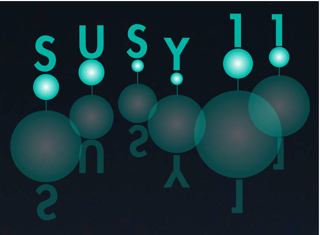Speaker
Dr
Eduardo Rojas
(Instituto de Física Universidad Nacional Autónoma de México)
Description
We revisit the CDF data on di-muon production to impose constraints on a large class of $Z'$ bosons
occurring in a variety of $E_6$ GUT based models. For this we suggest an alternative statistical analysis method
which ultimately allows to straightforwardly (i)~vary the gauge coupling strength, $g'$, of the underlying $U(1)'$;
(ii)~include interference effects with the $Z'$ amplitude (which are especially important for large $g'$);
(iii)~smoothly vary the $U(1)'$ charges; (iv)~combine
these data with the electroweak precision constraints, as well as with other observables obtained from colliders
such as LEP~2 and the LHC; and (v)~find preferred regions in parameter space once an excess is seen.
Our method yields limits generally differing by only a few percent from the CDF ones when we follow their approach.
We also analyze the dependence of these limits on various factors contributing to the production cross-section,
showing that currently systematic and theoretical uncertainties play a relatively minor r$\hat{\rm o}$le.
One general result is that interference effects are quite relevant if one aims at discriminating between models.
We use a Bayesian method to project lower limits on the $Z'$ mass for the Tevatron and for a number
of actual and hypothetical reference energies and luminosities for the LHC. Finally, we show the full classification of the $E_{6}$ $Z'$
models with integer charges.
Primary authors
Dr
Eduardo Rojas
(Instituto de Física Universidad Nacional Autónoma de México)
Dr
Jens Erler
(Instituto de Fisica Universidad Nacional Autónoma de México)
Co-authors
Paul Langacker
(School of Natural Sciences, Institute for Advanced Study, \\ Einstein Drive, Princeton, NJ 08540, USA)
Shoaib Munir
(Department of Physics, COMSATS Institute of Information Technology, \\ Defence Road, Lahore-54000, Pakistan)
